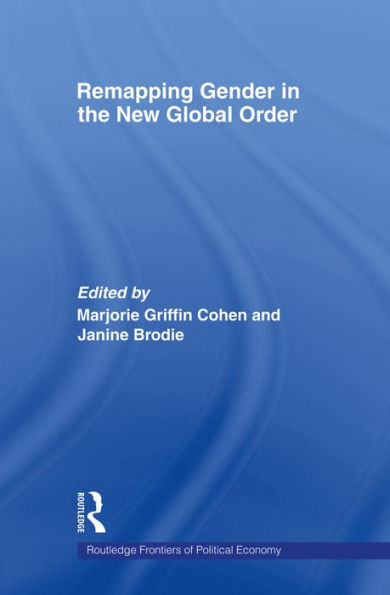This book analyses changes in gender relations, as a result of globalization, in countries on the semi-periphery of power. Semi-periphery refers to those nations which are not drivers of change globally, but have enough economic and political security to have some power in determining their own responses to global forces. Individual countries obviously face challenges that are to some extent unique, although the prescriptions for economic and social restructuring are based on a common competitive logic.
Remapping Gender in the New Global Order draws on examples from four countries on the semi-periphery of power but still located in the top category of the UNDP’s Human Development Index. At one end is Norway, one of the world’s richest and most developed welfare-states, and, at the other, is Mexico, a country that is considerably poorer and more susceptible to the power of the United States and international agencies. Australia and Canada, the other two semi-peripheral countries examined, are in the middle. Also included are comparisons with the epicentre of the ‘core’ base of power – the United States.
The individual chapters focus on the effect on specific groups of people, including males and indigenous groups, the mechanisms people use to both cope with dramatic social changes, and the strategies and alliances that are used to affect the course of changes. It covers topics that range from implications of labour migration on care regimes to globalism’s effect on masculinity and the ‘male breadwinner’ model.
This book analyses changes in gender relations, as a result of globalization, in countries on the semi-periphery of power. Semi-periphery refers to those nations which are not drivers of change globally, but have enough economic and political security to have some power in determining their own responses to global forces. Individual countries obviously face challenges that are to some extent unique, although the prescriptions for economic and social restructuring are based on a common competitive logic.
Remapping Gender in the New Global Order draws on examples from four countries on the semi-periphery of power but still located in the top category of the UNDP’s Human Development Index. At one end is Norway, one of the world’s richest and most developed welfare-states, and, at the other, is Mexico, a country that is considerably poorer and more susceptible to the power of the United States and international agencies. Australia and Canada, the other two semi-peripheral countries examined, are in the middle. Also included are comparisons with the epicentre of the ‘core’ base of power – the United States.
The individual chapters focus on the effect on specific groups of people, including males and indigenous groups, the mechanisms people use to both cope with dramatic social changes, and the strategies and alliances that are used to affect the course of changes. It covers topics that range from implications of labour migration on care regimes to globalism’s effect on masculinity and the ‘male breadwinner’ model.

Remapping Gender in the New Global Order
272
Remapping Gender in the New Global Order
272Related collections and offers

Product Details
| ISBN-13: | 9781135988975 |
|---|---|
| Publisher: | Taylor & Francis |
| Publication date: | 06/11/2007 |
| Series: | Routledge Frontiers of Political Economy |
| Sold by: | Barnes & Noble |
| Format: | eBook |
| Pages: | 272 |
| File size: | 1 MB |
